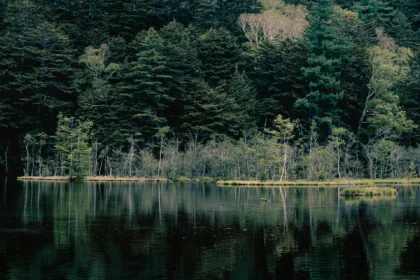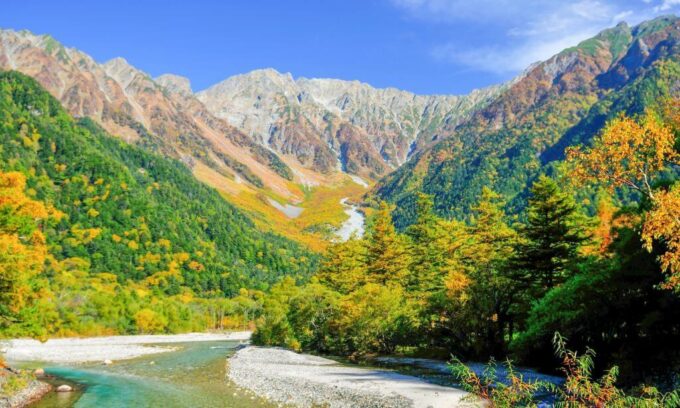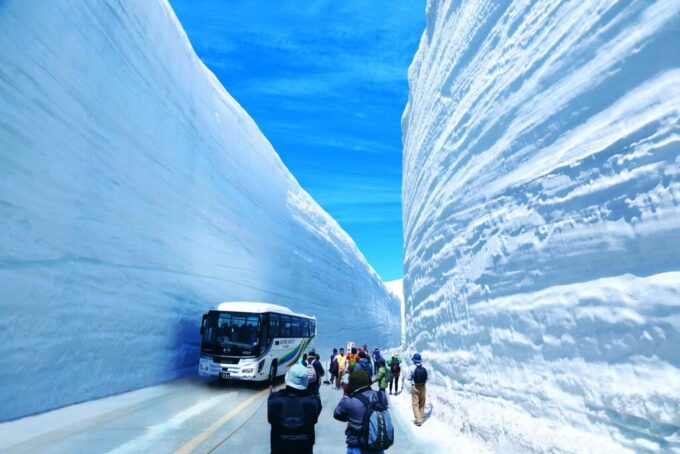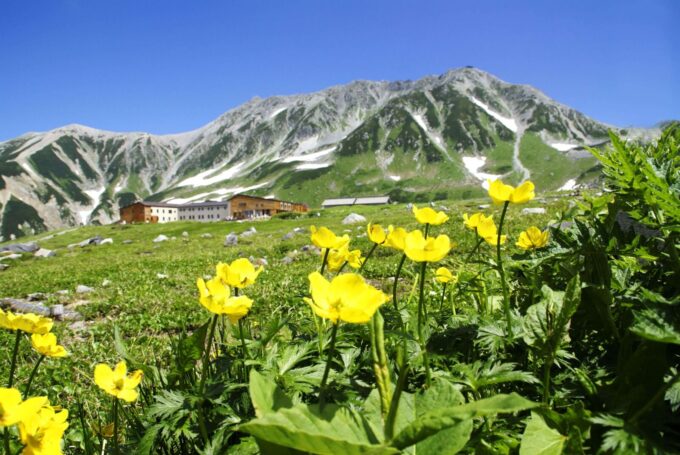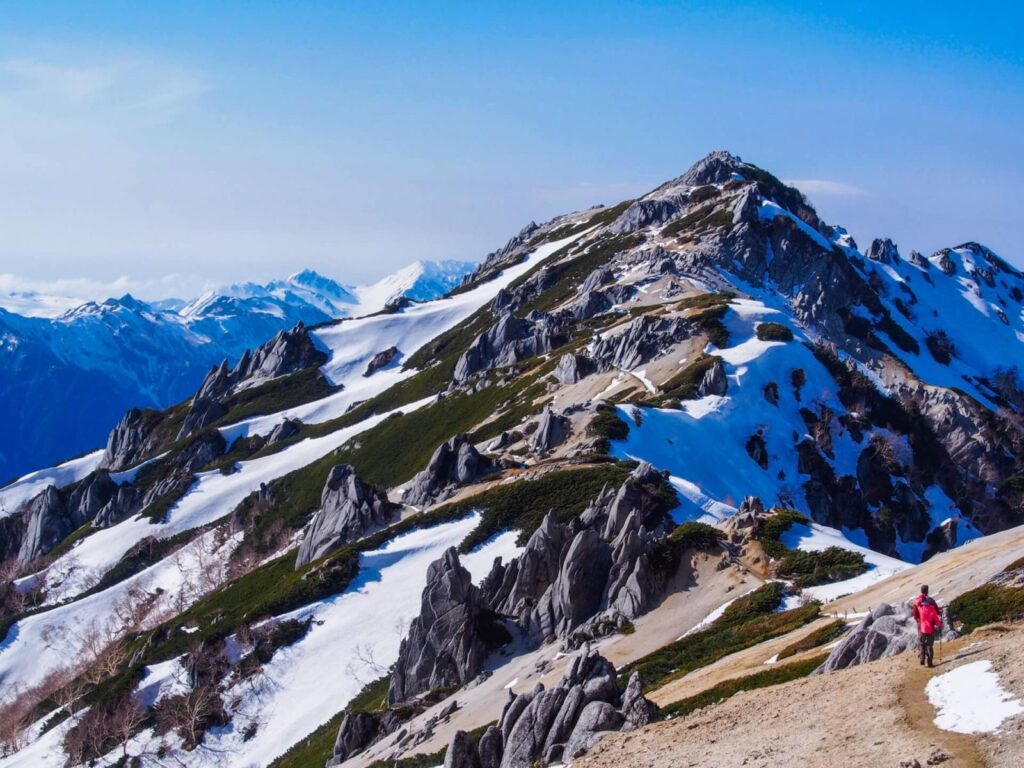
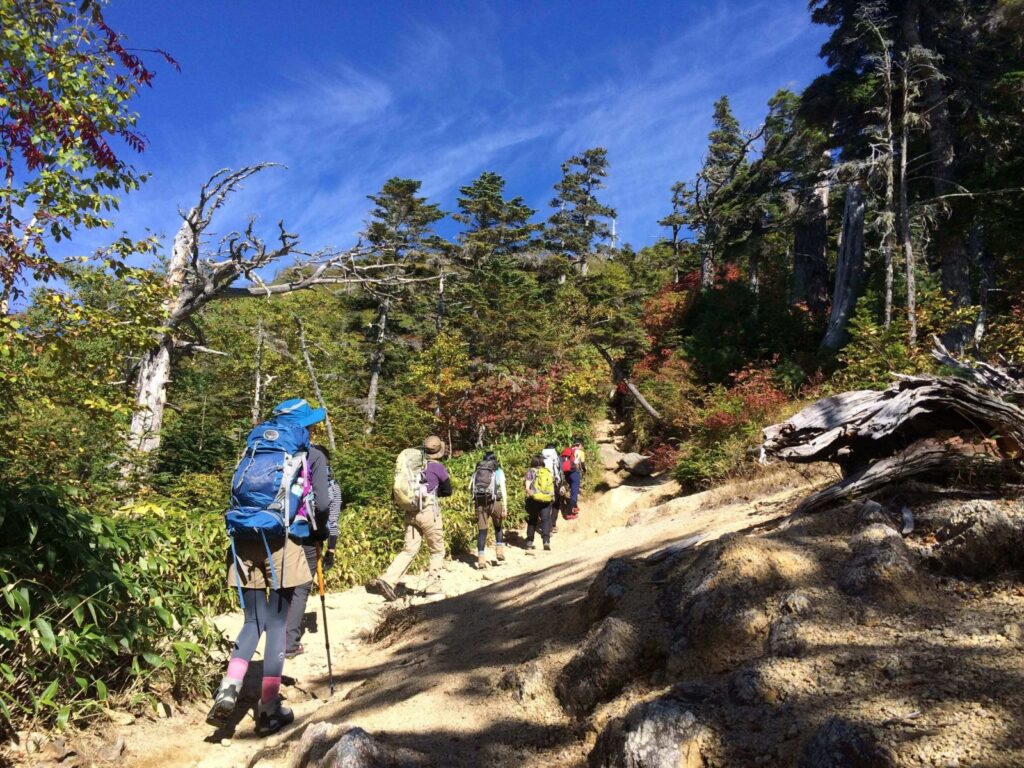
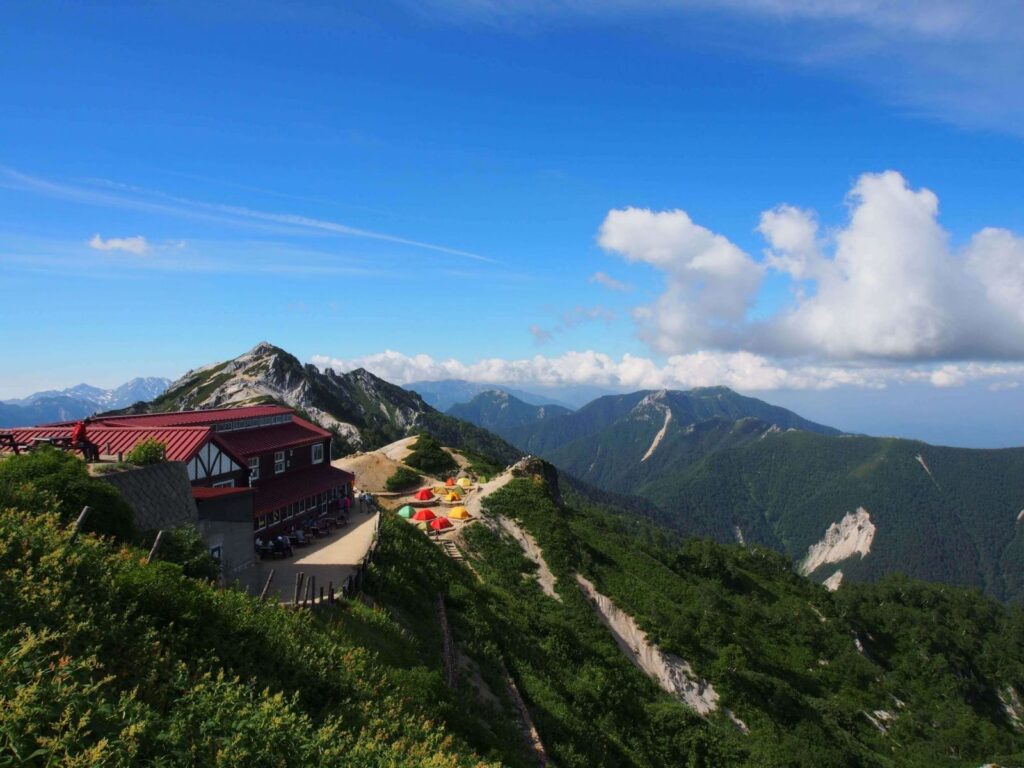
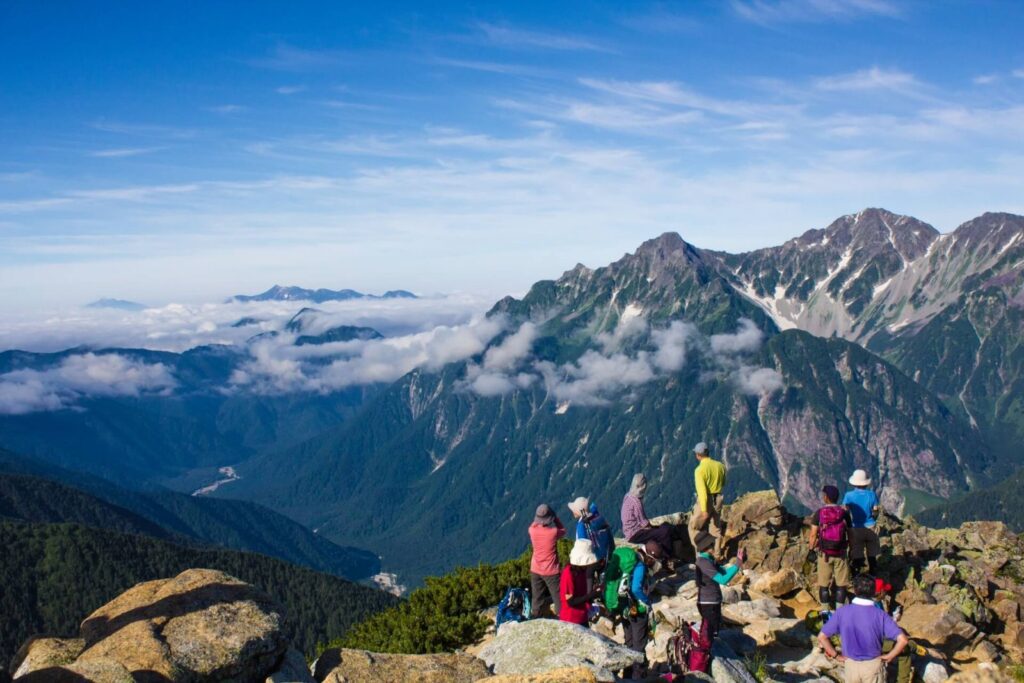
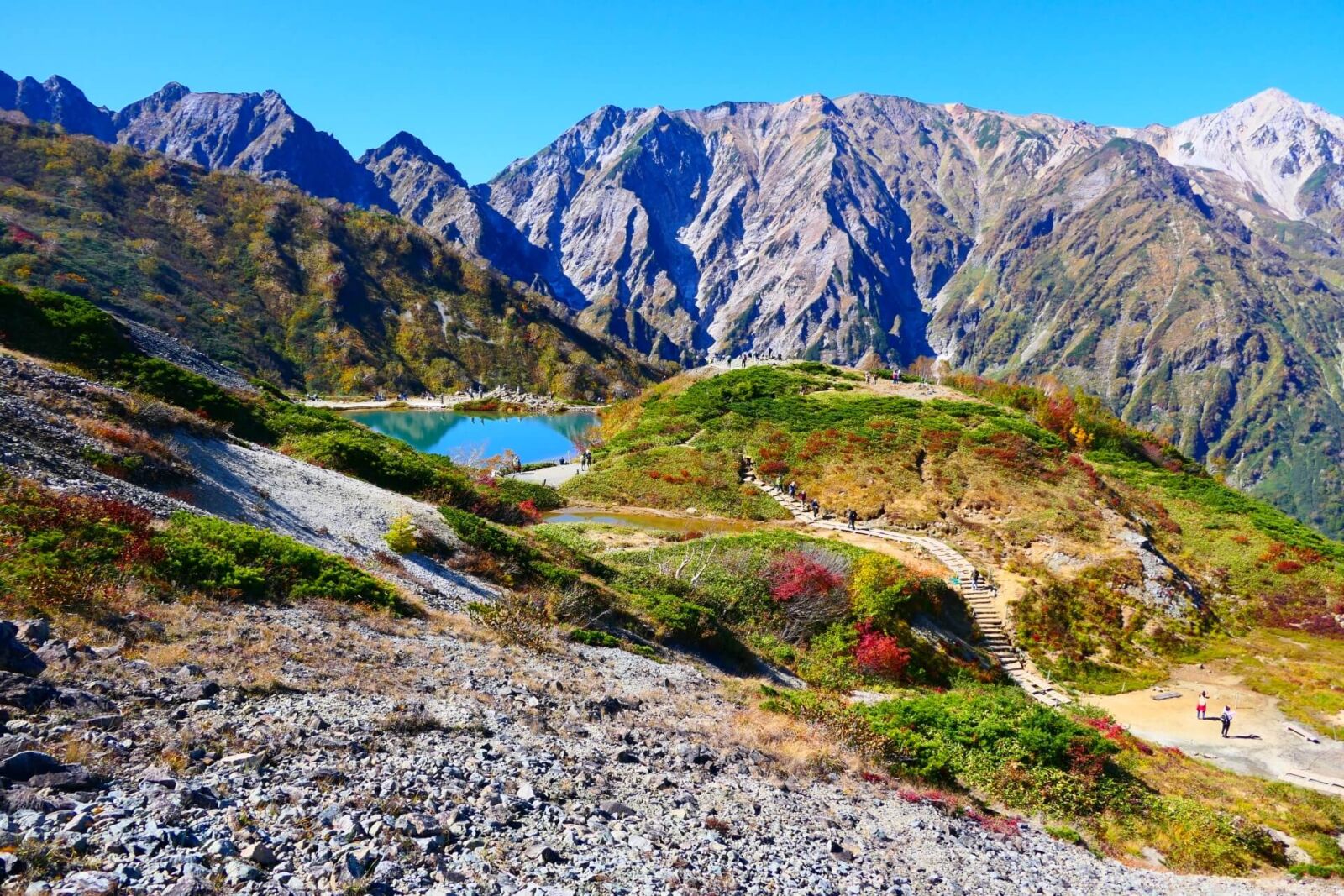
At its heart, Japan is a country of mountains with over seventy percent of the land mass deemed ‘mountainous’, and many peaks considered sacred. Mountain worship plays a key role in Japan’s native religion of Shintoism, imbuing even the most casual of alpine walks with significance. Long considered the realm of the gods, mountains offer an escape from the crowds and stress of the world below and a path into the heart of Japan.
-- Where are the Northern Japanese Alps?
-- Highlights and Hiking Trails of the Northern Alps
-- When to Go and What to Bring
-- Mountains in Japanese Culture
-- Nearby Attractions and Places to Stay
-- Tours and Charters to the Northern Alps
WHERE ARE THE NORTHERN JAPANESE ALPS?
Located around 240 km Northwest of Tokyo, the Northern Japanese Alps make up the border area between Nagano, Gifu, Toyama and Niigata Prefectures. Most easily accessed from Matsumoto, around 35 km from the alps, other points of access include Nagano City, Takayama City, Toyama City, and Azumino, and Hakuba. While having your own car is the most convenient way to get around, many areas and trailheads are accessible through public transport making nature readily accessible to all. The Hokuriku Shinkansen and Azusa Express services connect Tokyo directly to the area, while the Shinano Express does the same for those coming from Nagoya. The Northern Alps themselves extend for nearly 100 km North to South, meaning it may take a while to reach your final destination even if you are nearby to a different part of the alps. For this reason, it is important to carefully plan your daily itinerary for a smooth experience.
HIGHLIGHTS AND HIKING TRAILS OF THE NORTHERN ALPS
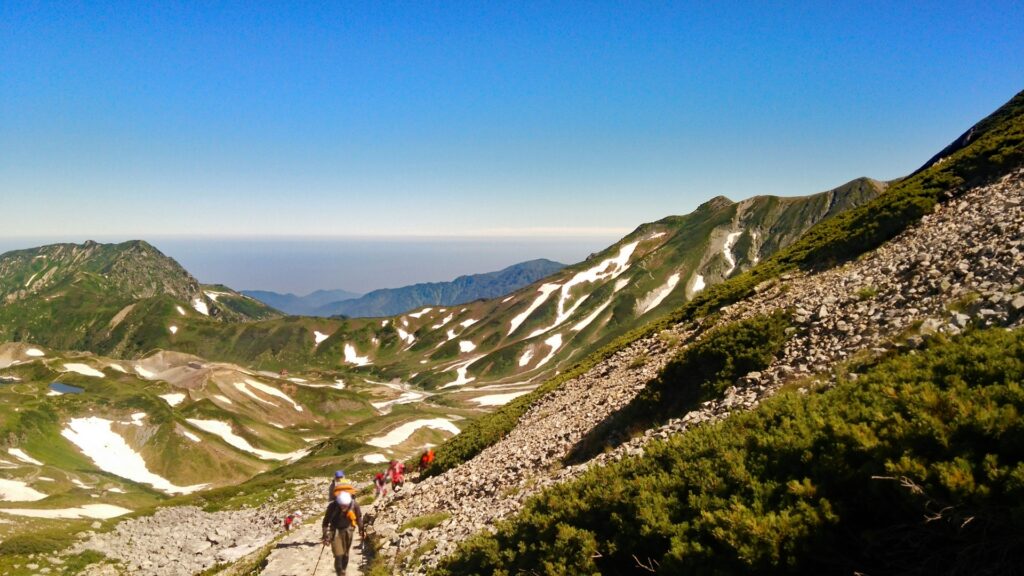
The North Alps boast some of the Japan’s highest mountains, several of which can be reached from the three trailheads – Nakabusa / Ichinosawa / Mitsumata - at Azumino. For anyone seeking to enjoy alpine pursuits in Japan, this is an ideal place to begin with hikes suitable to anyone from absolute beginners to advanced mountaineers. Just make sure to do your research, pick a hike that's right for you, know what to expect, go prepared and register your intention to hike at the trailhead. These are some of the most popular mountains in the region:
Mount Tsubakuro / 2763 metres
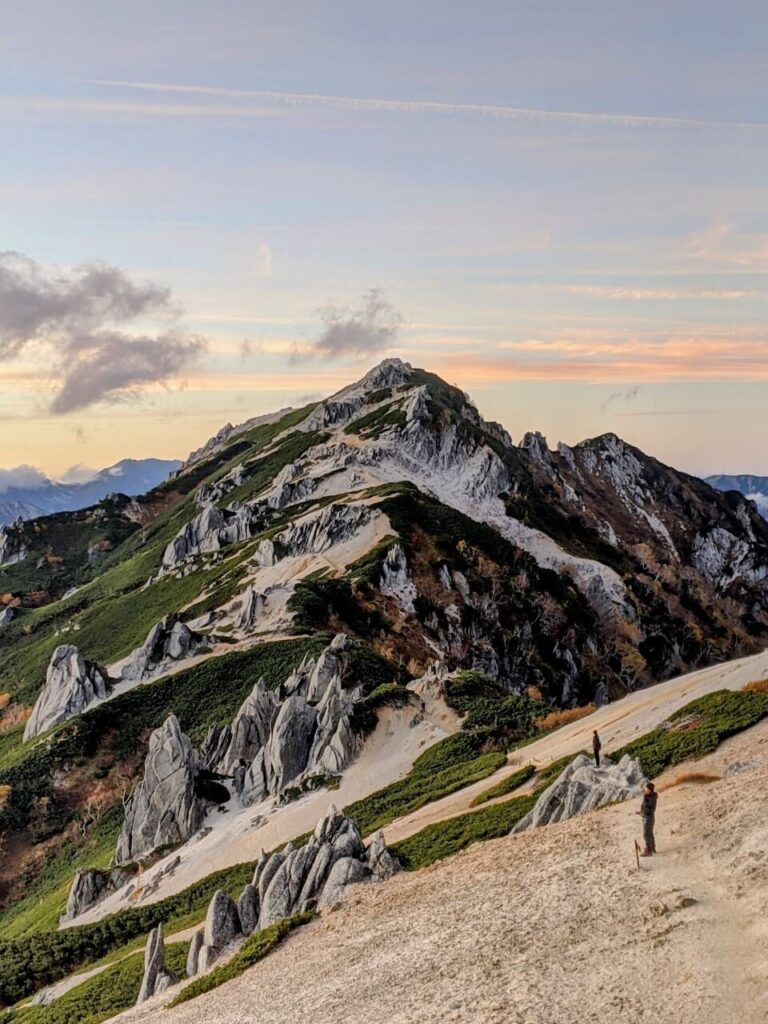
Often referred to as the ‘Queen of the North Alps’, Mt, Tsubakuro stands 2763 metres above sea level and is an enjoyable overnight hike for beginners and anyone of reasonable fitness (or a single day hike if you are fit and have some experience). Its affectionate naming as the Queen of the North Alps reflects its beauty, elegance and picturesque fields of alpine flowers that bloom above white granite sand. While some parts of the ascent are steep, trails are well-maintained making it a popular climb for beginner and intermediate hikers. The 100-year old Enzansou Mountain Hut is one of the country's most historic and best mountain accommodations, making this hike particularly enjoyable for anyone looking to dip their toes into alpine exploration in Japan - see below for details.
Mount Jonen / 2857 metres
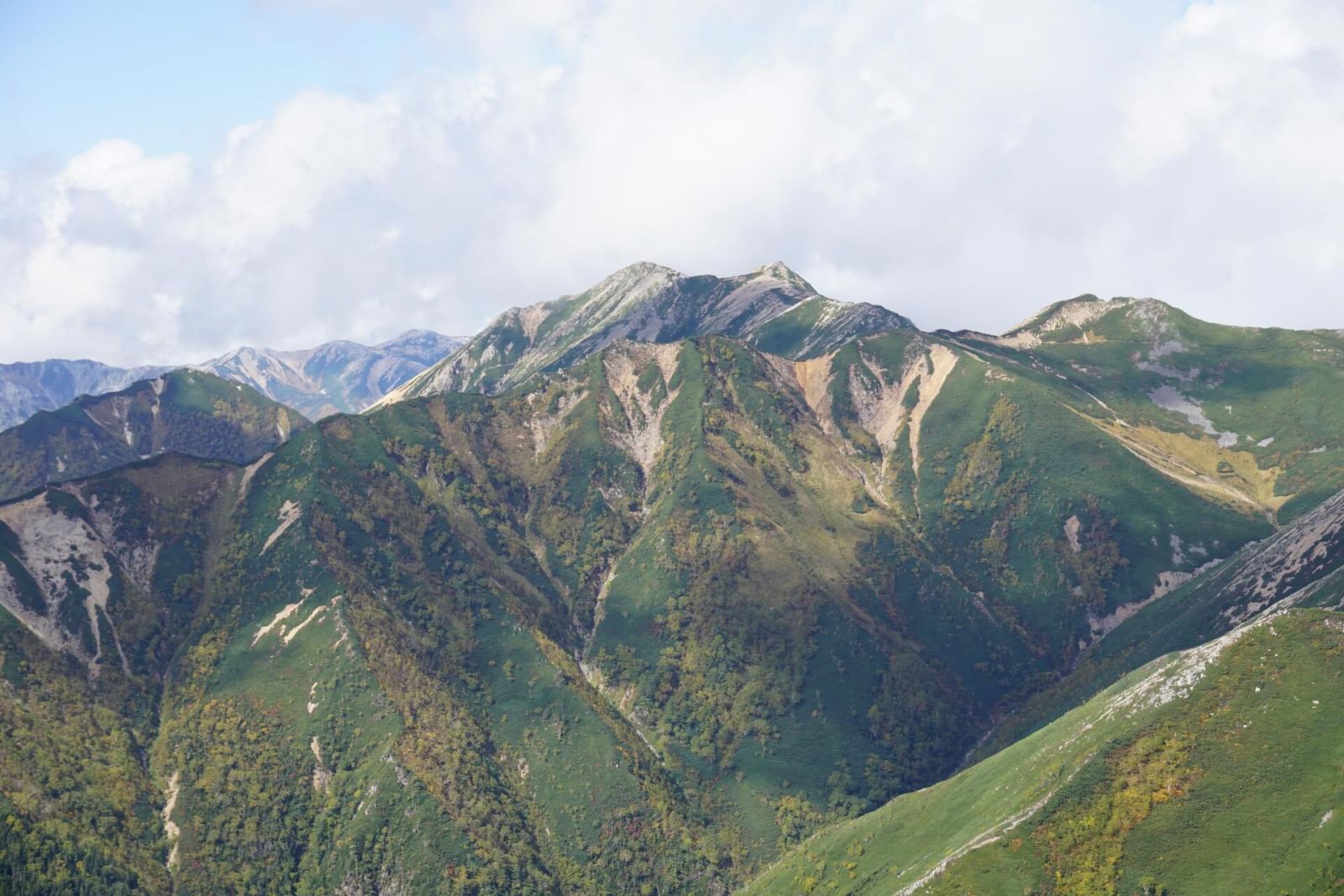
The distinctive pyramid shape of Mt Jonen make is an impressive sight from the valley below with the name said to come from the shape of the mountain, which reminds some people of a monk in prayer. The climb to the summit is harder than that to the top of Mt Tsubakuro and can be attempted from either the Ichinosawa or Mitsumata trailhead, with the hike from Ichinosawa being the easier to attempt.
Mount Chogatake / 2677 metres
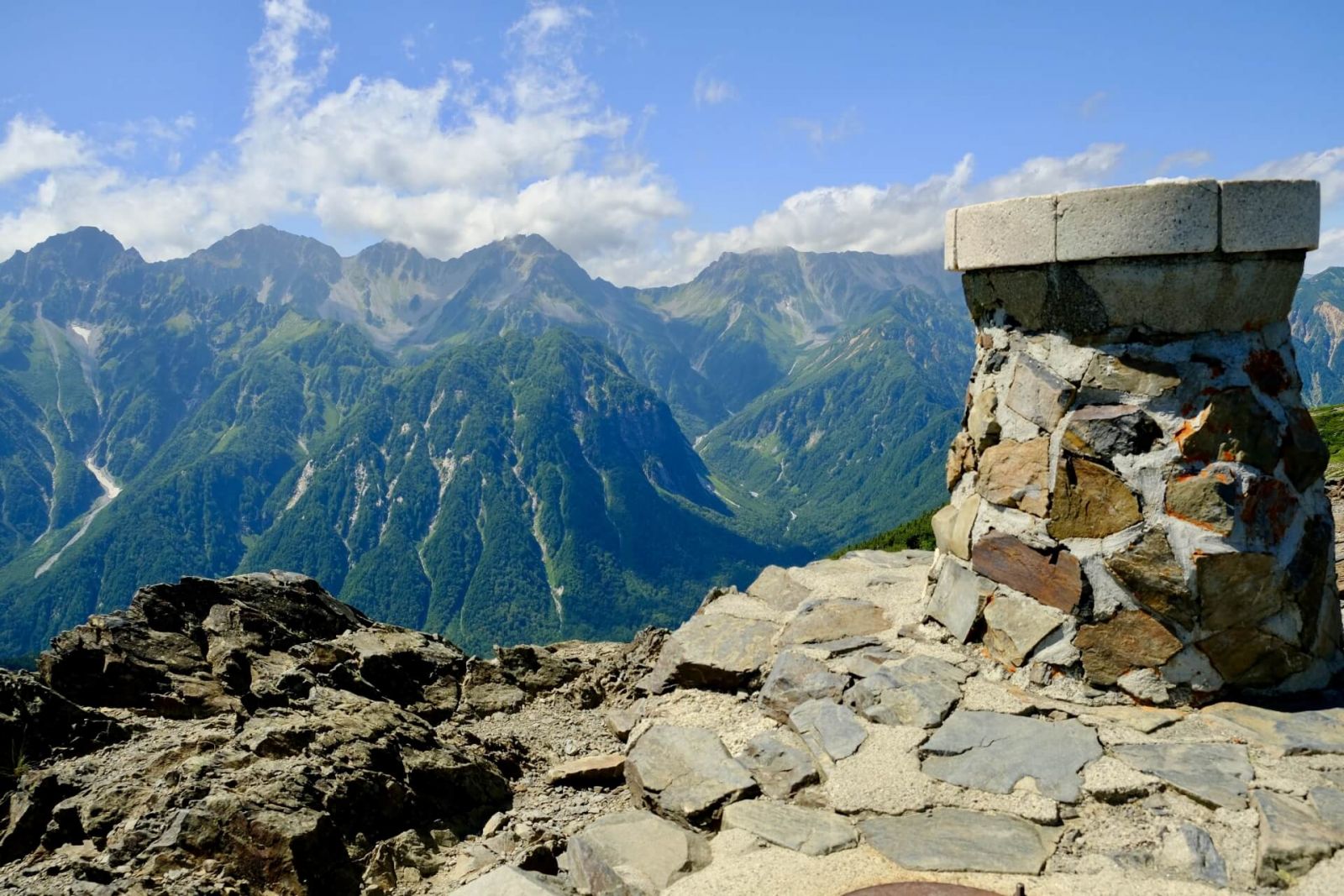
The lowest of the three peaks listed, Mt Chogatake offers outstanding views of the notably higher Mt Hotaka and Mt Yari – both standing over 3000 metres in height and Japan’s second and third highest mountains respectively. Mt Chogatake can be reached via the Mitsumata trailhead and is yet another very popular hike suitable to anyone of reasonable fitness including beginner.
Recommended Hiking Route
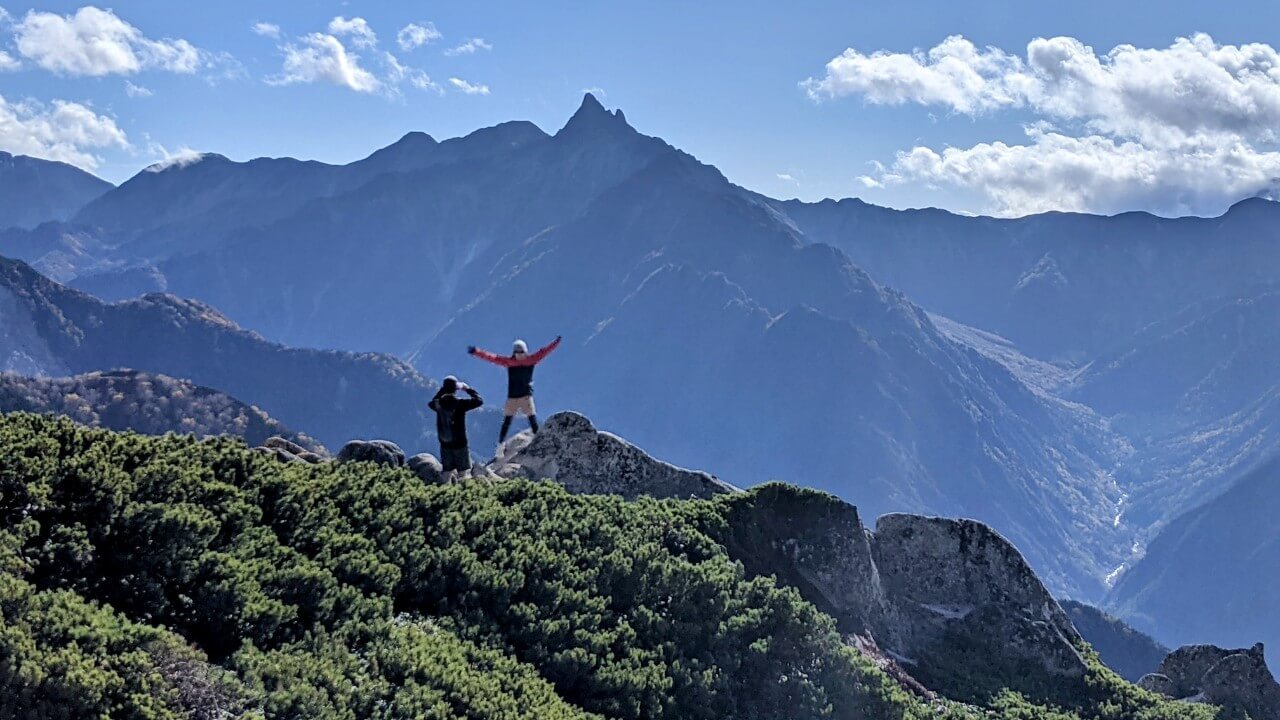
From Azumino, three trailheads give access to some of the region’s best walks. They can be reached using taxis from nearby train stations and accommodation, with hikes suitable for anyone ranging from beginners to advanced mountaineers. We recommend the following:
Mount Tsubakuro: 2 day / 1 night hike inc. stay at Enzansou Mountain Hut
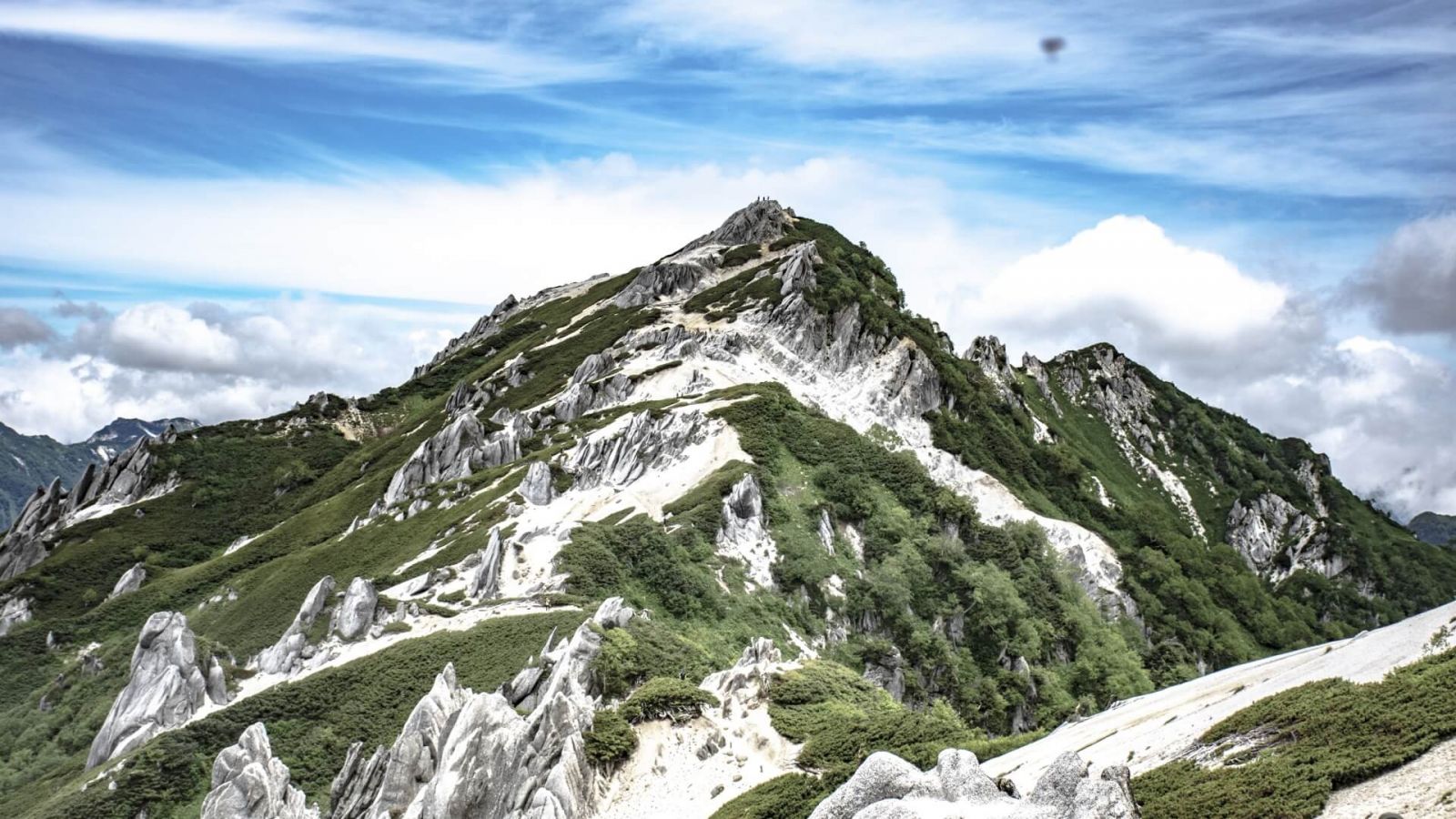
Starting at the Nakabusa Trailhead (1462m), the walk takes you along the Kassen Ridge – a trail ascending 1250 metres and considered one of the steepest climbs in the Alps. The trail is well-maintained, clearly-marked, and suitable for beginner and intermediate hikers.
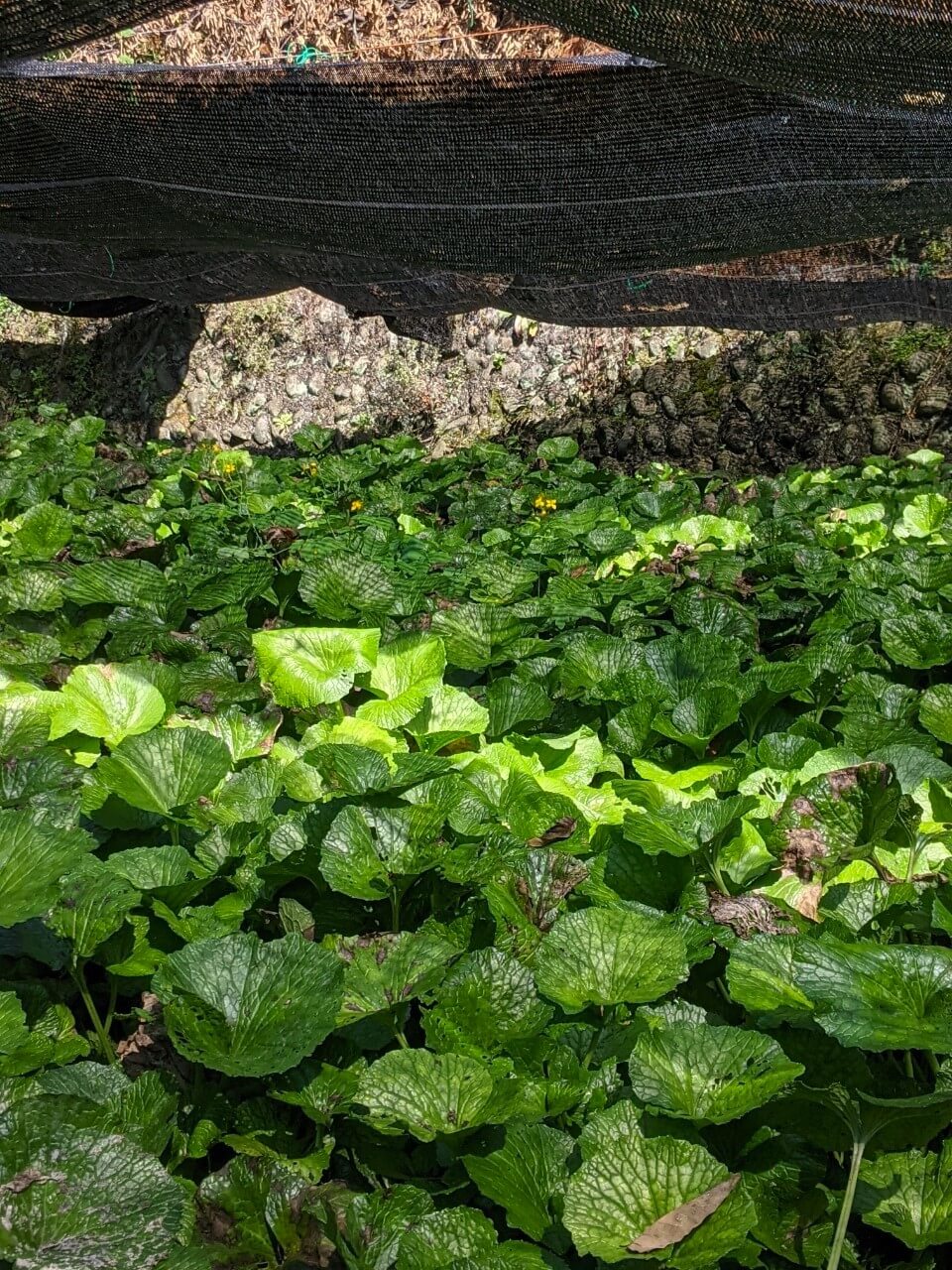
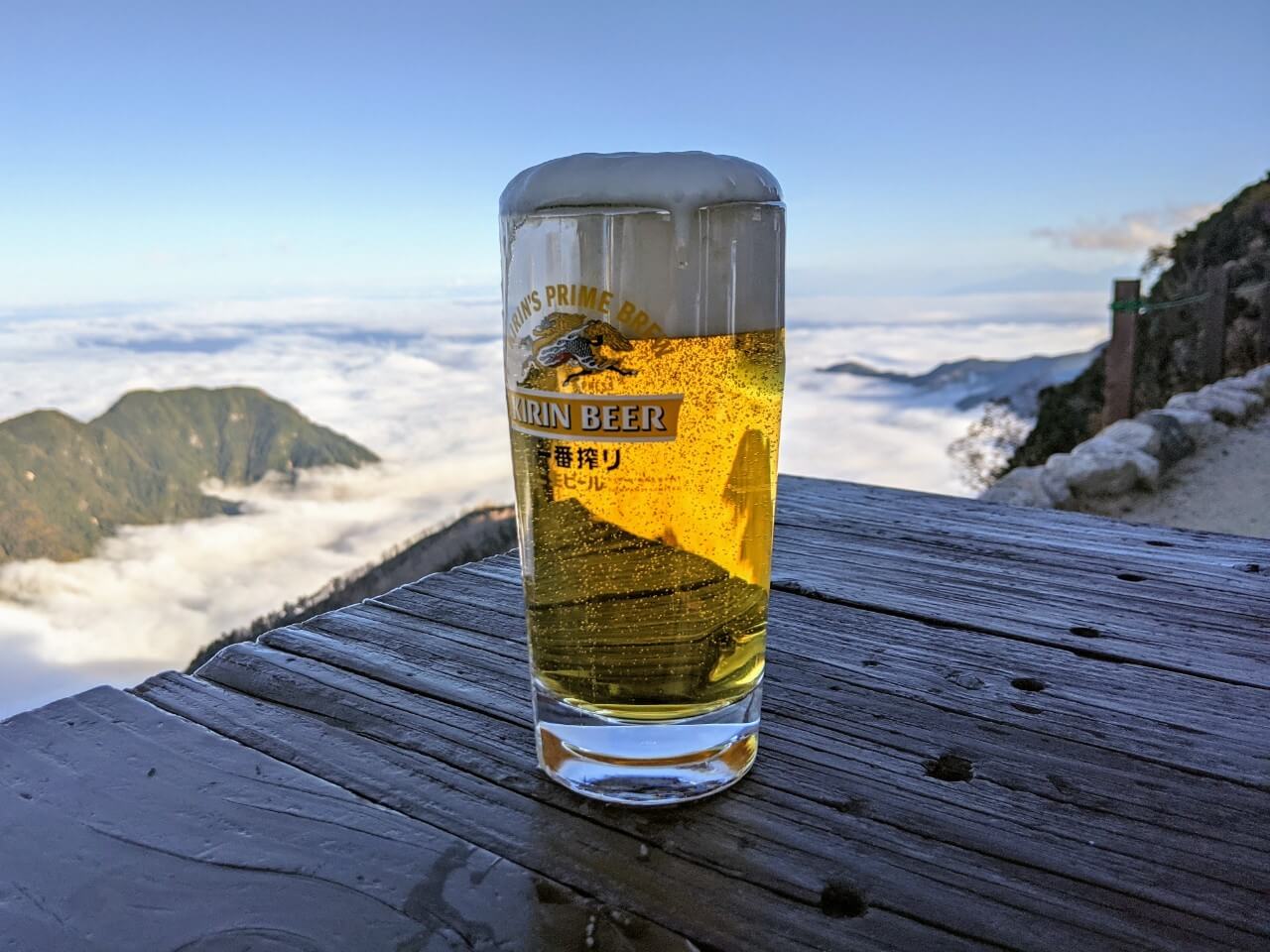
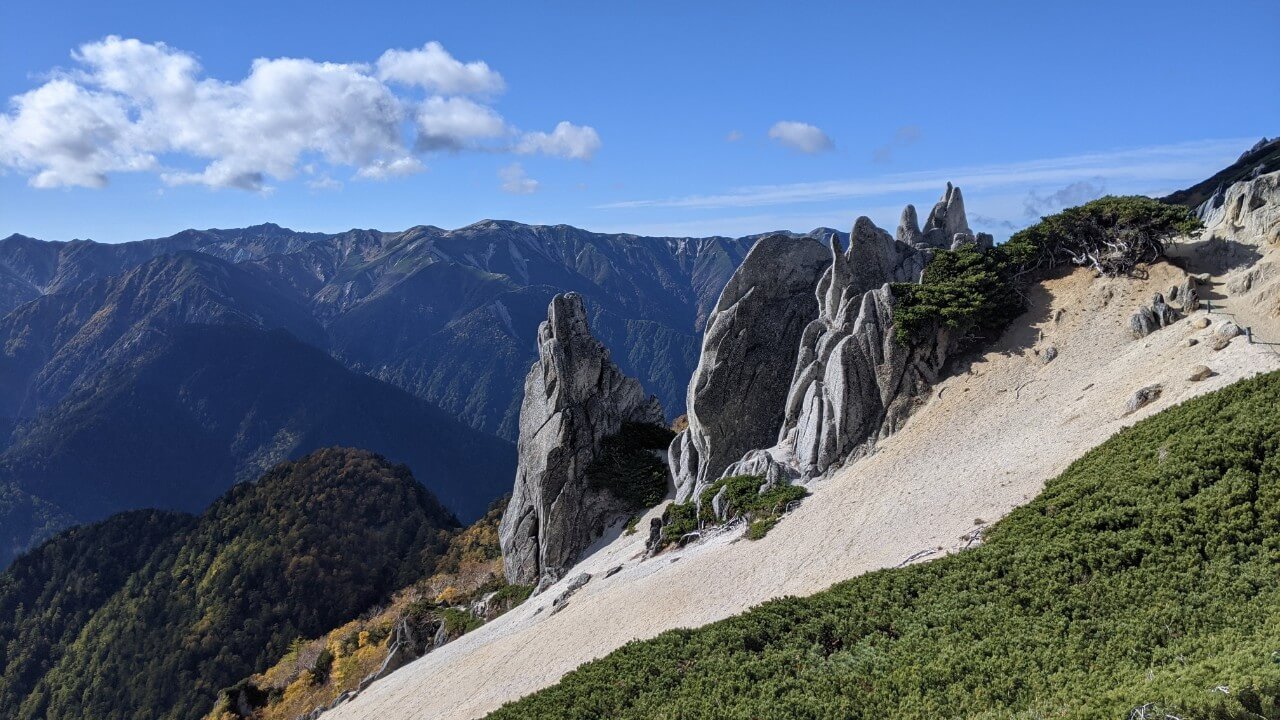
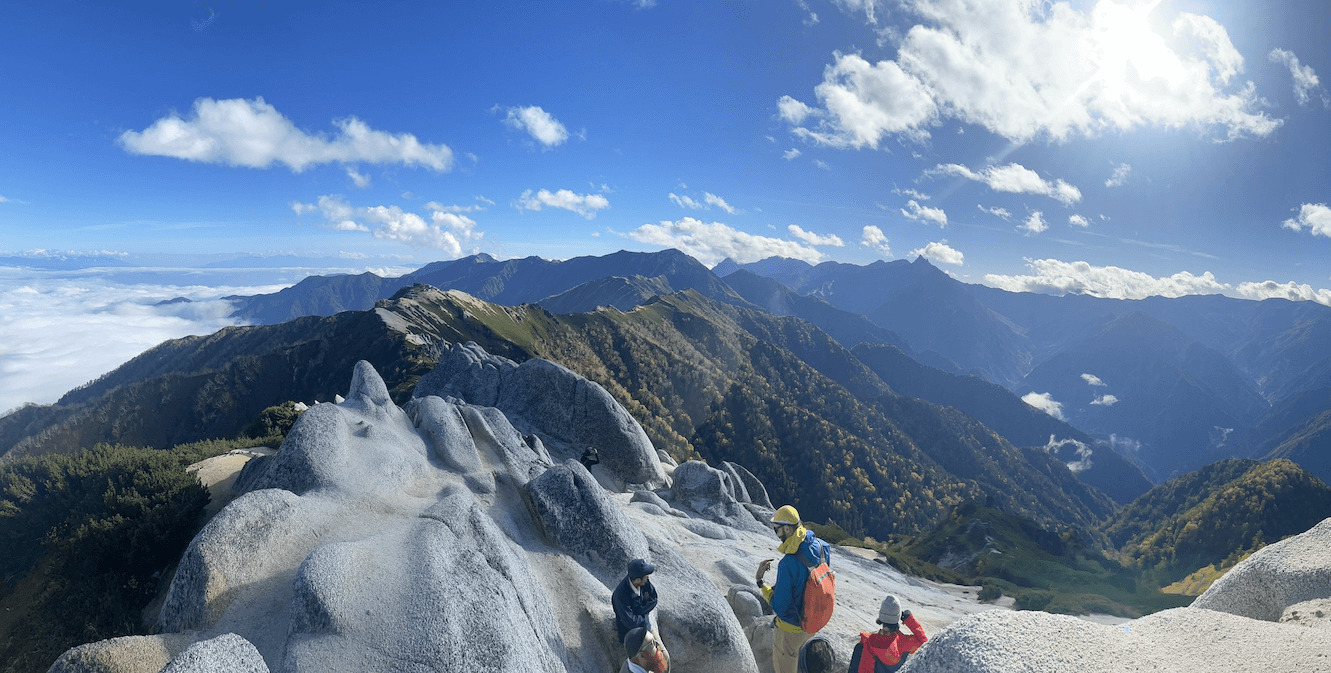
The early hours of the hike, which are also the steepest, are through forest saving hikers from the sun on bright days. Regular rest areas are dotted along the path with a cabin serving food and refreshments a couple of hours into the walk. From there, the trail emerges from the forest into a more open landscape offering fantastic views of the surrounding mountains. On clear days you'll even be able to make-out Mount Fuji looming on the horizon.
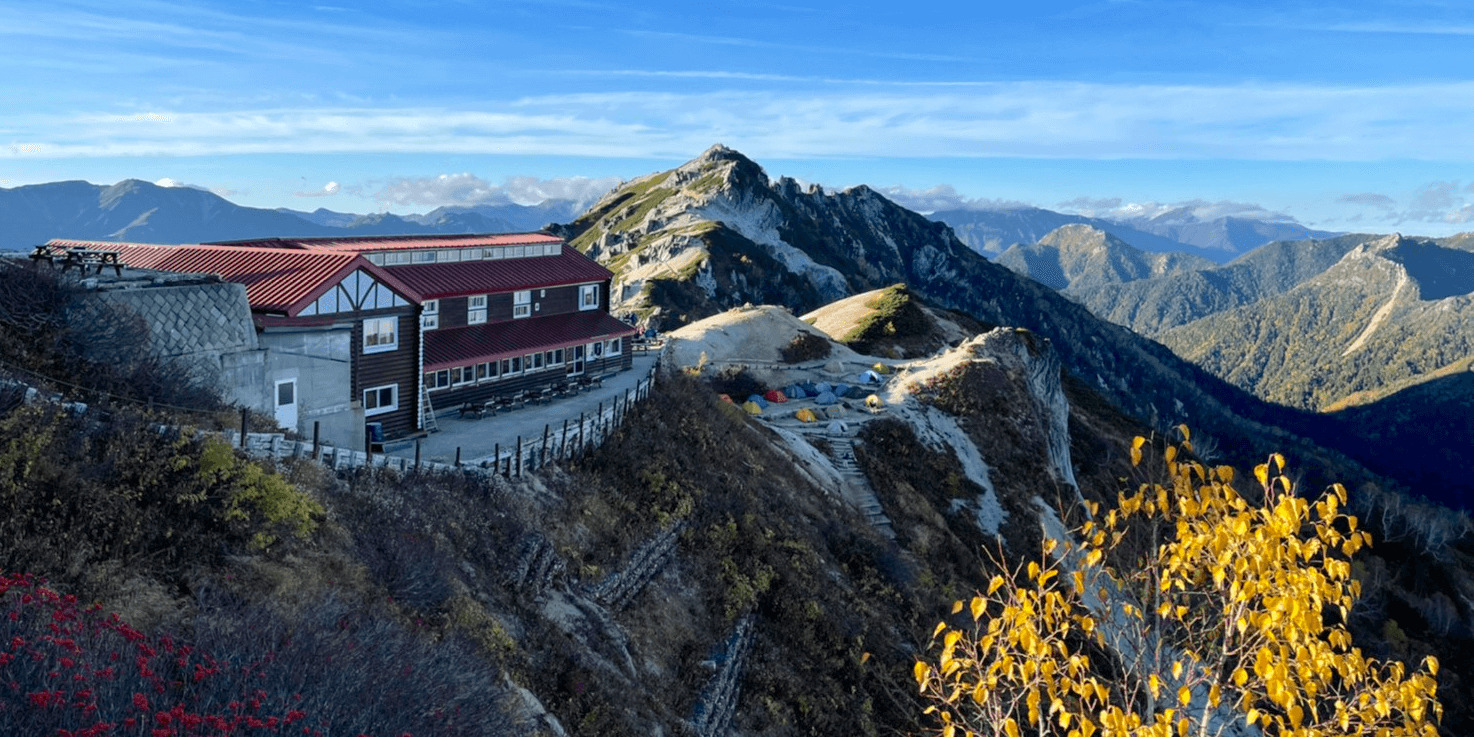
Leading to the Enzansou Mountain Hut (pictured above) you can check-in before the final push to the summit at 2763 metres, returning to the hut for the night. In total, day one requires around 5 hours of walking. while the descent on day two takes around 2 hours and 40 minutes from Enzansou Mountain Hut back to Nakabusa Trailhead. Once you get back down to the trailhead, make sure to head to one of a couple of 'onsen' (natural hot springs) located around the carparks for a well-earned and totally satisfying long soak.
TRAILHEAD ACCESS
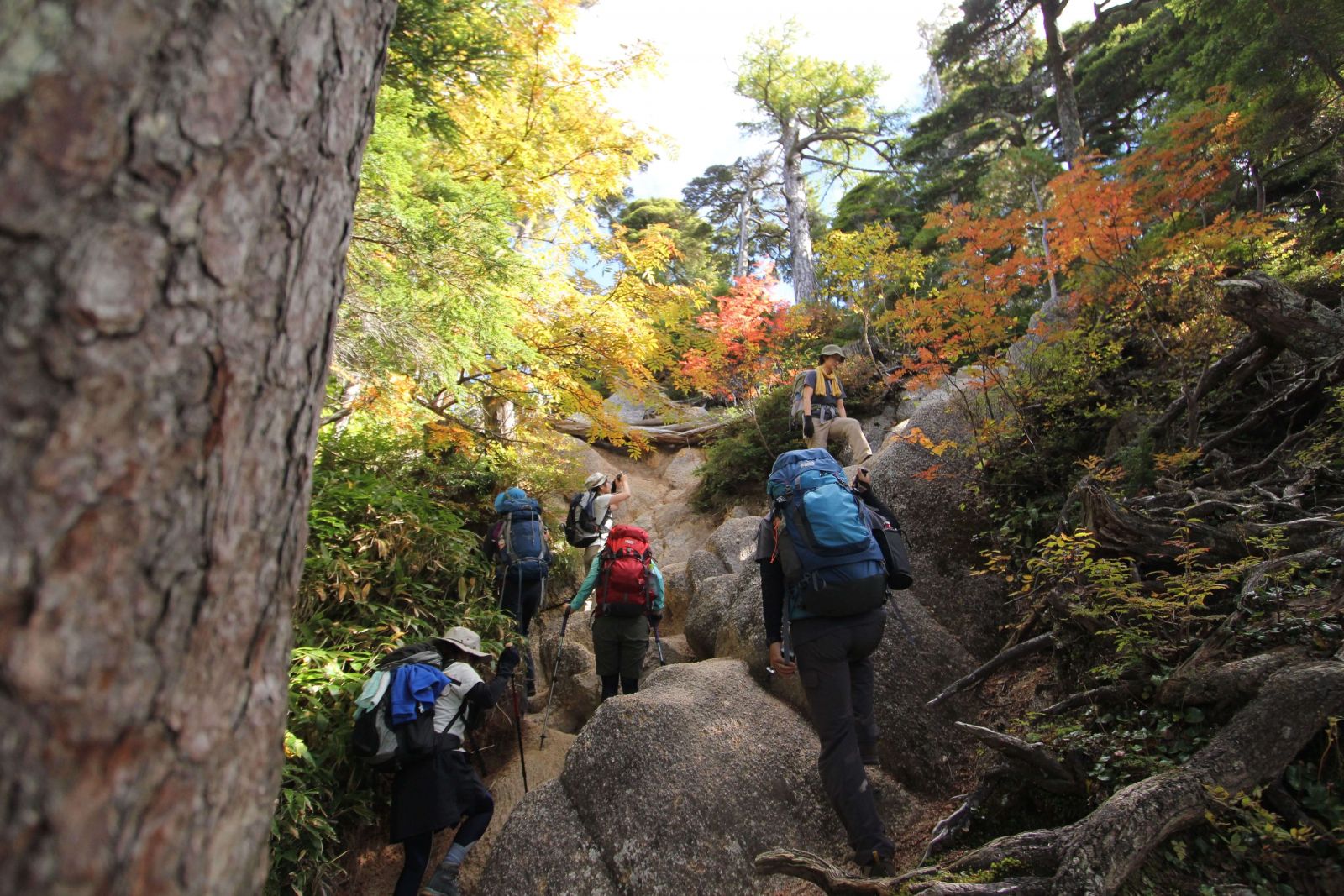
From Azumino, three trailheads provide access to multiple hiking courses in the North Alps, including:
Nakabusa / Mt. Tsubakuro Trailhead
Located in Nakabusa Onsen, the trailhead can be reached using local bus – approximately 55 minutes – from Hotaka Station. Upon arrival at Nakabusa Onsen, the trailhead is right in-front of you and easy to spot.
Ichinosawa / Mt. Jonen Trailhead
Located around 25-minutes by taxi from Hotaka Station, the Ichinosawa Trailhead provides access to trails leading to Mt Jonen. For hikers wanting to ascend Mt Jonen, starting at Ichinosawa is an easier trail that the one starting at Mitsumata (as detailed below).
Mitsumata / Mt. Chogatake Trailhead
Around 35-minutes by taxi from Hotaka Station – or only 20-minutes from Toyoshina Station, the Mitsumata Trailhead provides access to Mt. Chogatake or the more difficult route to Mt. Jonen.
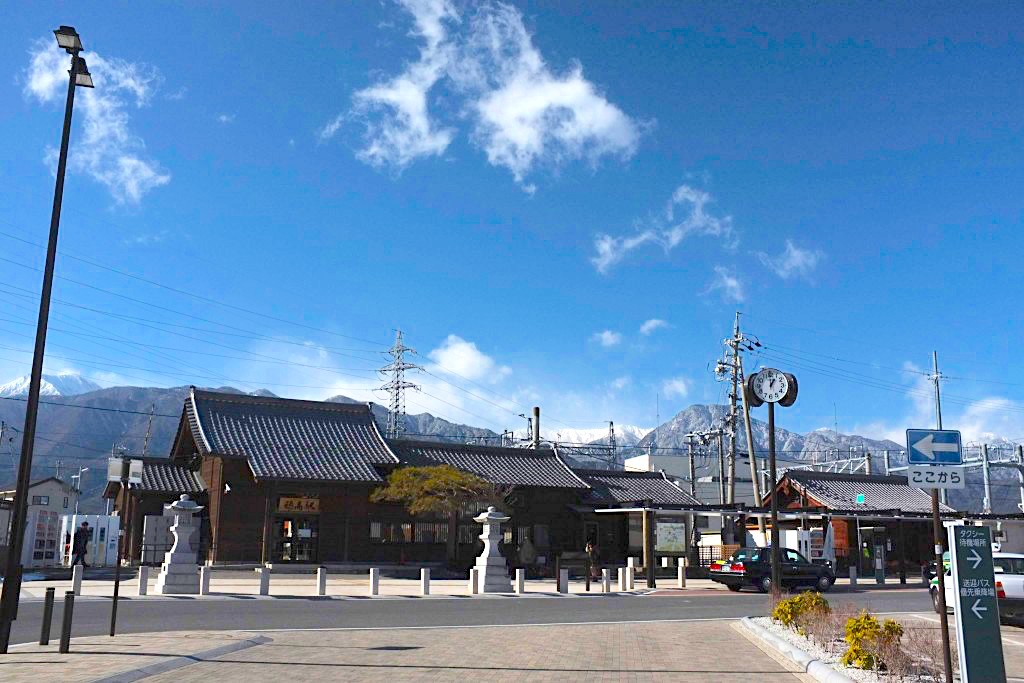
As the above information suggests, Hotaka Station is the most convenient gateway station to access the trailheads. For more information about how to get to there, see our ‘Hotaka Station’ access page.
WHEN TO GO AND WHAT TO BRING
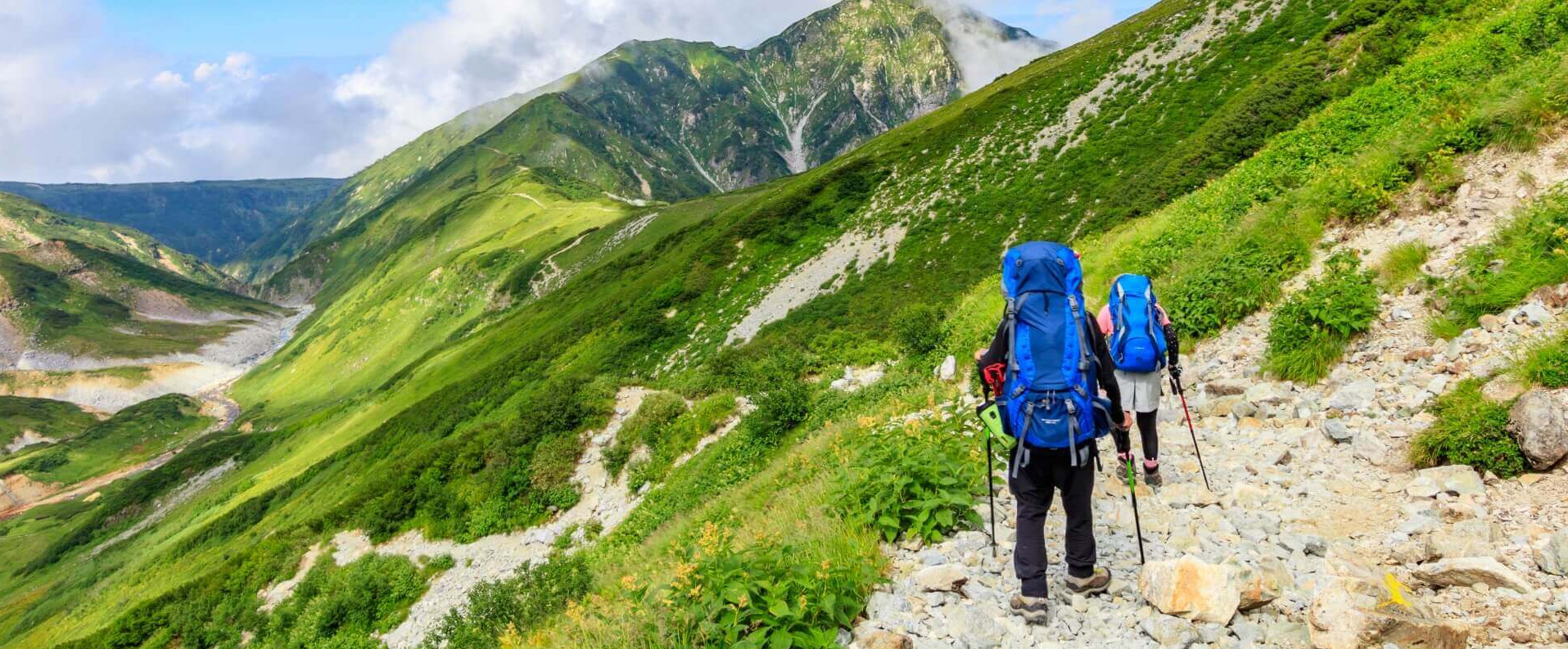
Whether you are new to mountain hiking or an experienced mountaineer, planning ahead and being prepared are essential to a safe and enjoyable walk. One of the most important things to consider is the weather. Mountain conditions can vary greatly from those around them with weather liable to change quickly and sometimes, without warning. In order to stay safe, it’s vital that you check and plan ahead.
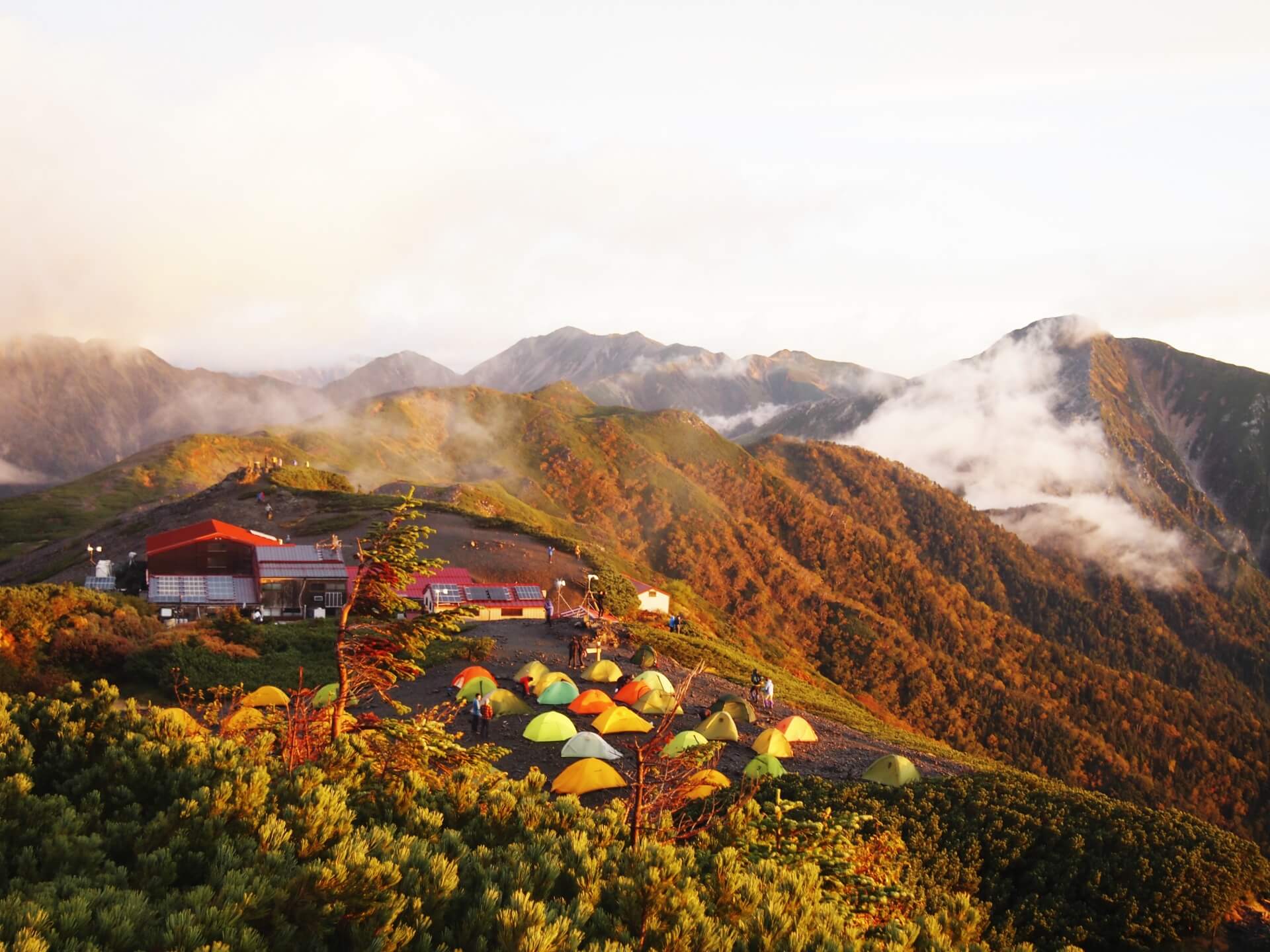
The following table provides an average for monthly temperatures in the Alps during the hiking season, specifically taken at Mt. Tsubakuro:
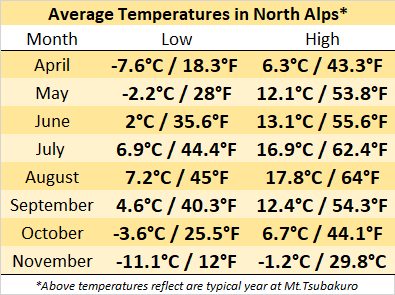
It’s important to note that the above temperatures are an average and that conditions can vary greatly. Therefore it’s essential to be prepared and carry the following:
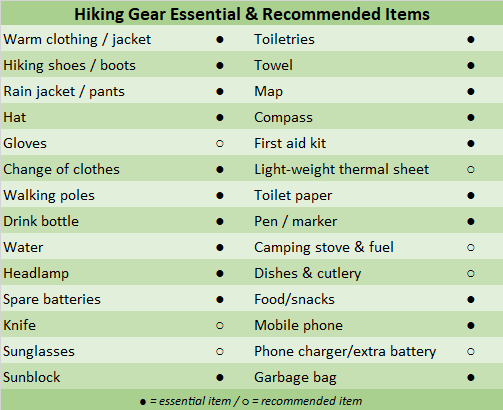
Please note, the items listed above are required for hikes from June to October. Outside of that window, mountain trials will be affected by snow and ice and should not be attempted by anyone other than expert mountaineers with adequate experience and preparation.
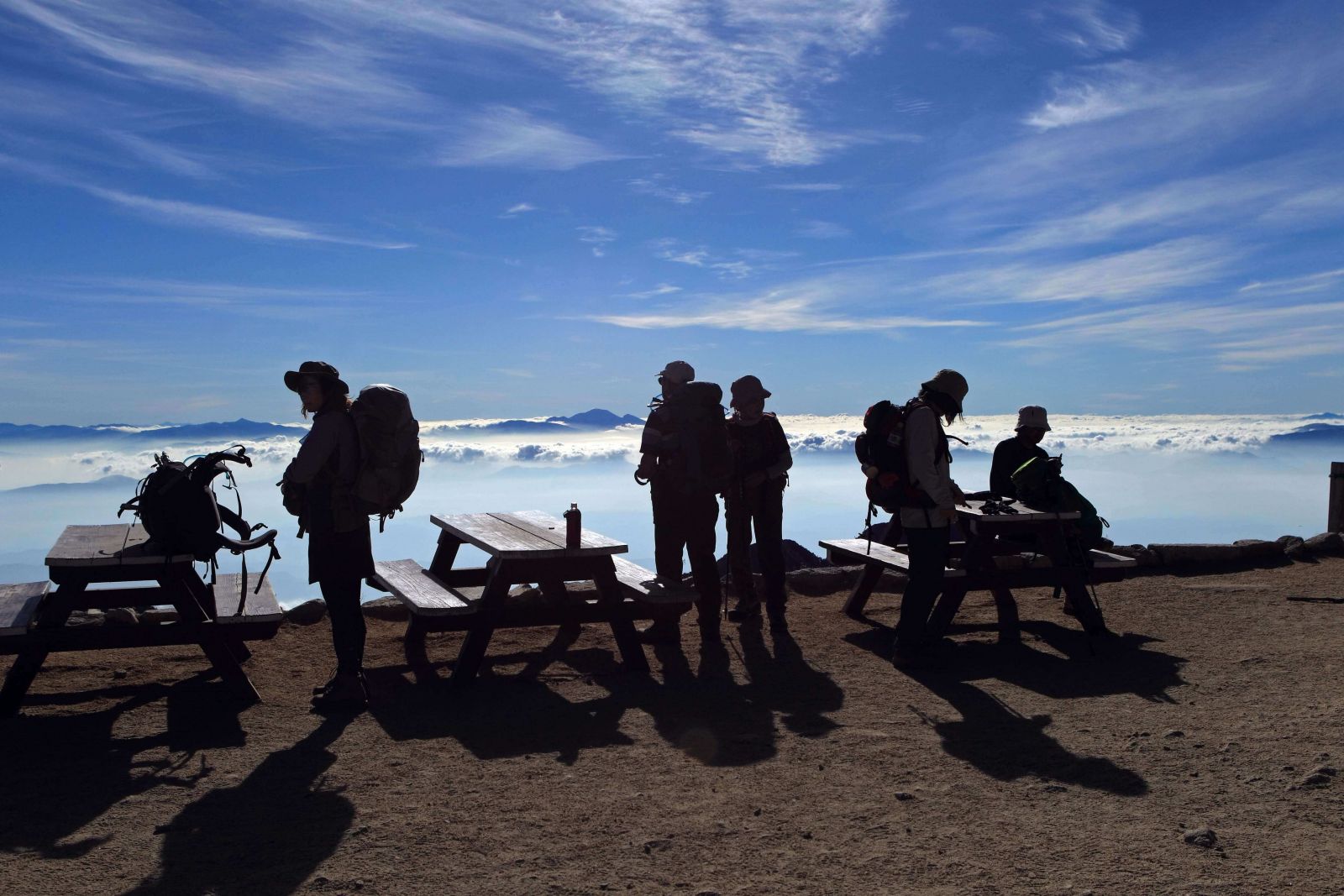
Always let someone know about you intended hike including when and where you will go and when you expect to return. If you become lost or injured, this may be the difference between a quick rescue and a possibly deadly prolonged search.
MOUNTAINS IN JAPANESE CULTURE
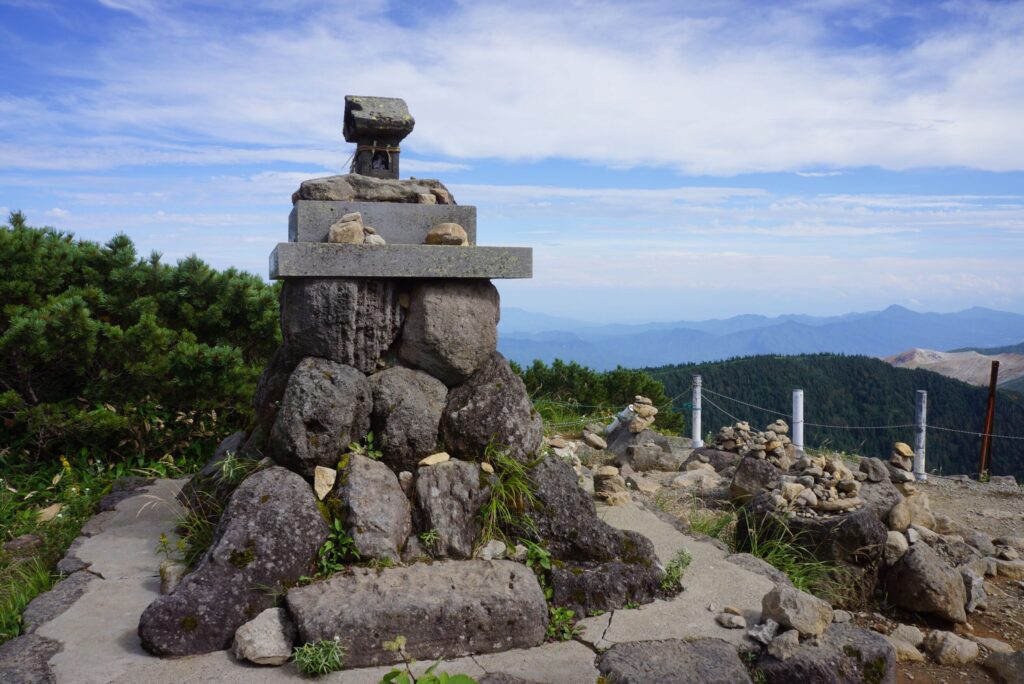
Nature worship has always played an important role in Japanese culture. Stemming from Japan’s native religion of Shintoism, natural features including mountains, rivers, waterfalls, and many trees and stones have long been seen as sacred and imbued with a divine nature
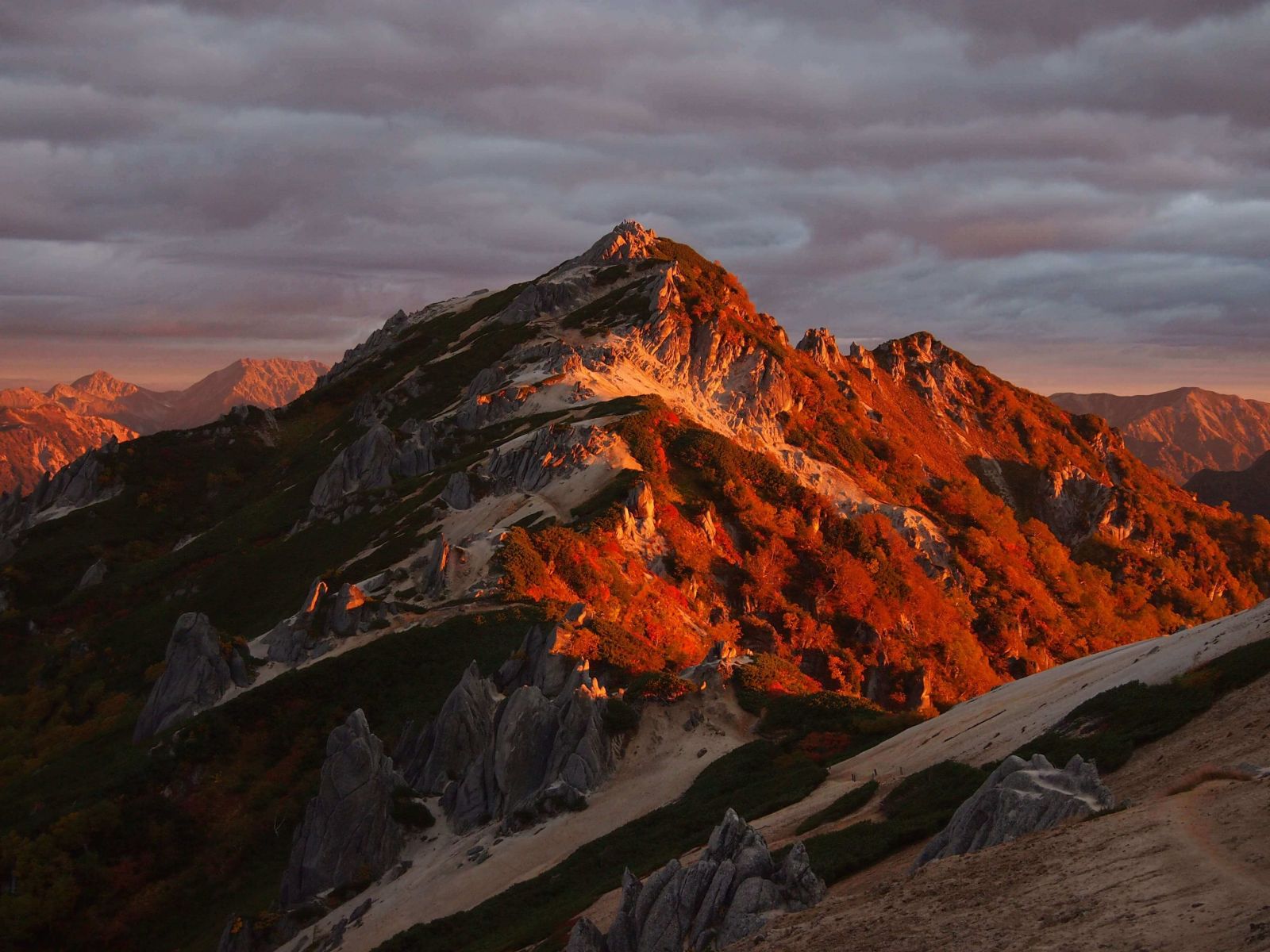
Japanese folklore tells that mountains are the source of human souls; born atop the mountain and flowing down rivers to bring life and prosperity of the human world below. As the domain of the gods, mountains have long been revered and also feared in Japan – places where only ascetics or the most hardened, wild people would venture.
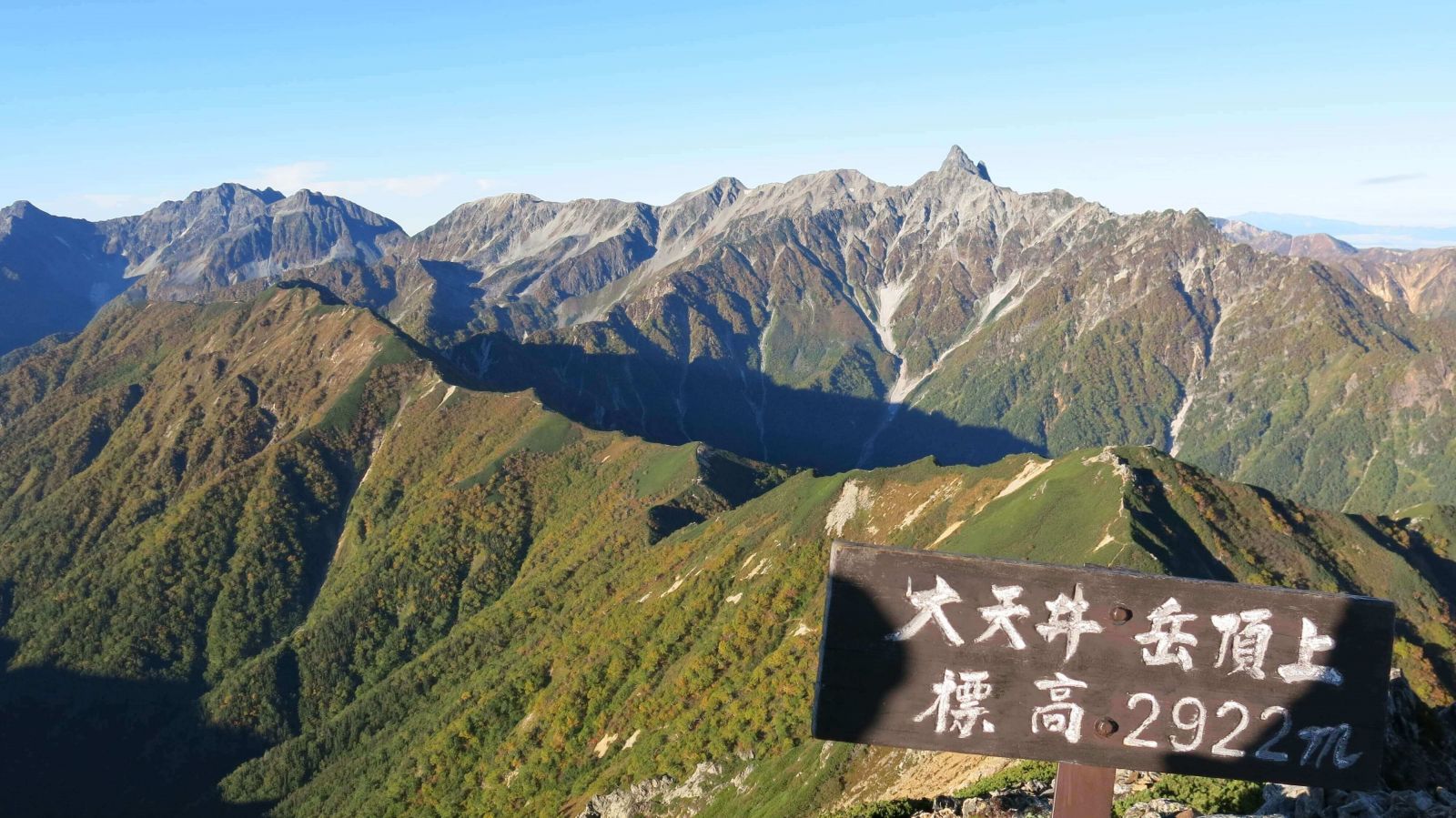
As such, Japan’s Shinto faith has given rise to sects devoted to specific mountains with several peaks continuing to act as beacons of pilgrimage for devotees. Along many trails, you will encounter shrines and temples dedicated to ‘kami’ (divine spirits) and Buddhist ‘bosatsu’ (enlightened beings), who oversee the safety of your journey and honour the mountain gods.

Whether or not you put much stock in such beliefs, Japan’s mountain worship imbues even the most leisurely of alpine strolls with serenity and a release for worldly concerns as you move through pristine nature and deep into the heart of Japan.
NEARBY ATTRACTIONS AND PLACES TO STAY
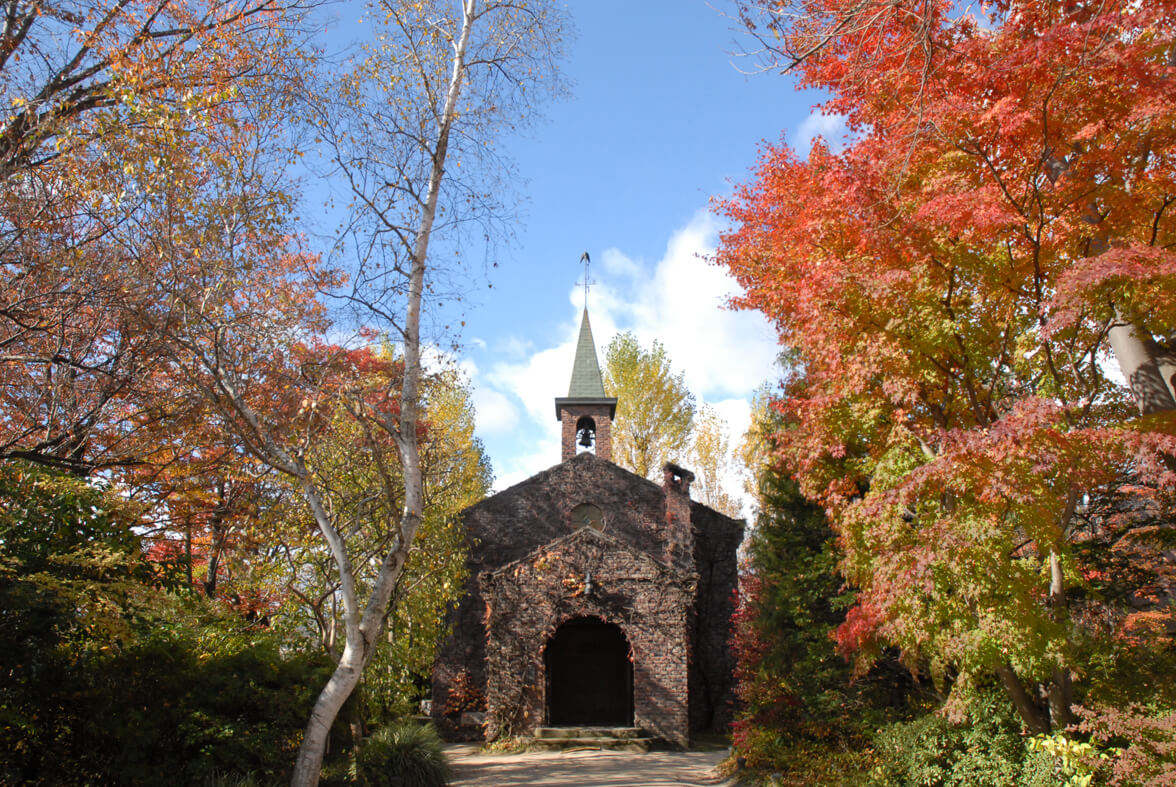
While the Northern Alps are perhaps the main draw in this part of Japan, there are a number of other great attractions located nearby that are worth a visit while you are in the area. From exciting cities to castles and art museums, there is a little bit of everything.
Matsumoto
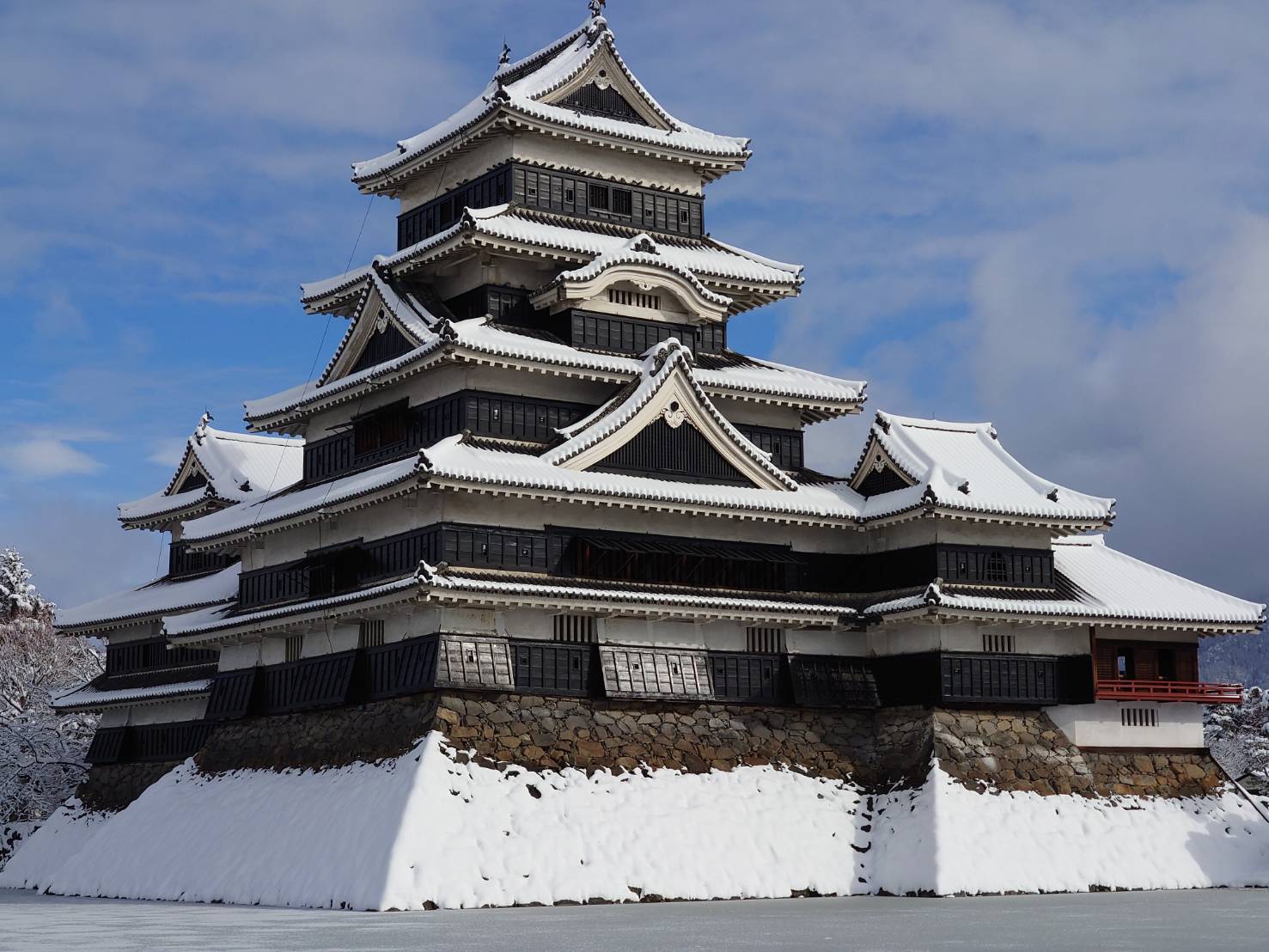
Best known for its beautiful and historic castle, Matsumoto is also home to a number of eateries, museums, bars, and shops that offer enough to keep anyone entertained all day. A morning visit to the new city museum followed by a trip to the castle and an afternoon of lunch and strolling the scenic streets downtown would be a great way to enjoy a break from hiking. For more to do in Matsumoto, please see our page '25 Things to Do Around Matsumoto and Where to Stay'.
Azumino
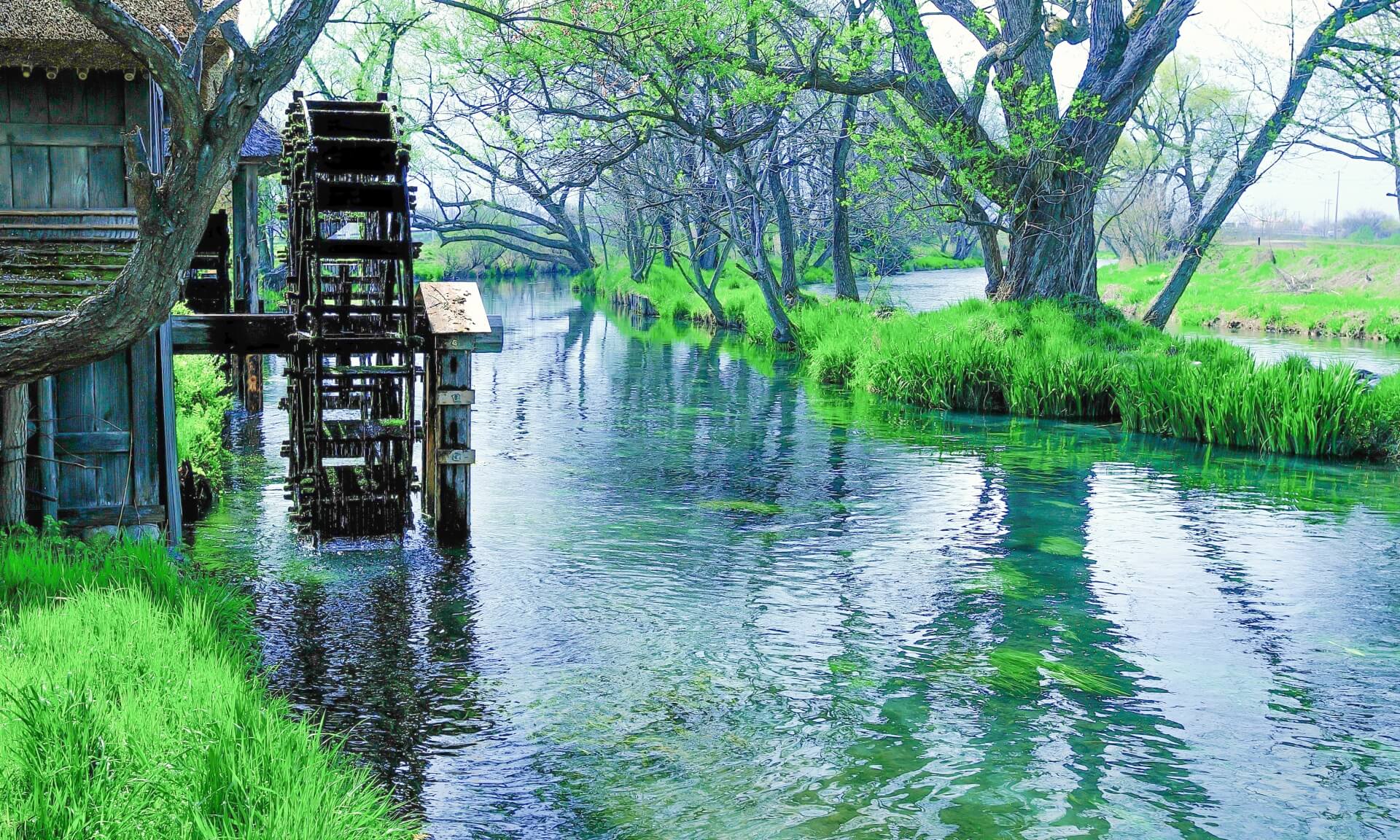
Located just north of Matsumoto, Azumino is a quaint rural area with beautiful views of the Northern Alps looming tall over the rice paddies and vegetable fields which take up most of the land space here. Especially popular is the Daio Wasabi Farm, one of Japan's largest Wasabi farms and a great place to take a walk and see for yourself how this famous Japanese plant is cultivated. Riding bicycles through the countryside also remains popular, and rentals are available at multiple locations. For more information, see our page '20 Things to Do in Azumino and Where to Stay'
Hotaka Onsen
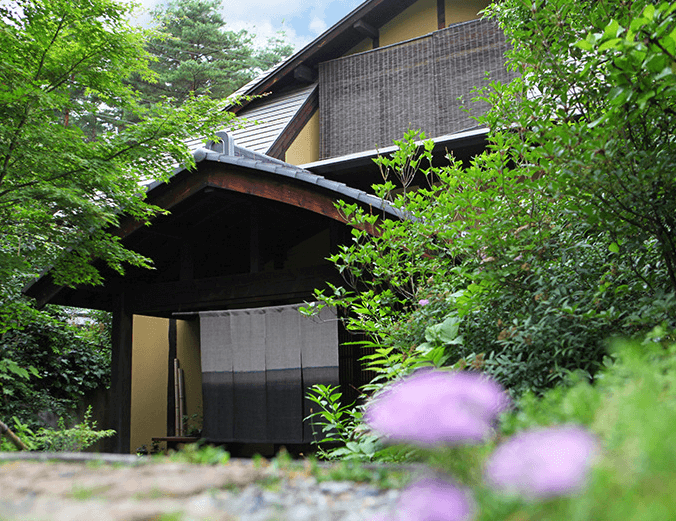
For visitors heading into the North Alps along any of the trails leading to and from Azumino, staying locally before or after your hike is the perfect way to relax, unwind and enjoy the experience. Located only 10-minutes drive from Hotaka Station and 40-minutes drive from the Nakabusa Trailhead, Hotaka Onsen-kyo boasts multiple hot spring guesthouses offering comfort and traditional Japanese service.
The town is home to a number of excellent ‘ryokan’ (traditional guesthouses) and a public onsen, Shakunagenoyu including open-air footbath while the surrounding region is home to many cafes, restaurants, museums and galleries. The ‘Azumino Art Line’ is made-up of eighteen galleries and museums showcasing a broad range of artistic styles. For many visitors, starting at the Rokuzan Art Museum – dedicated to the life and work of acclaimed sculptor, Rokuzan Ogiwara.
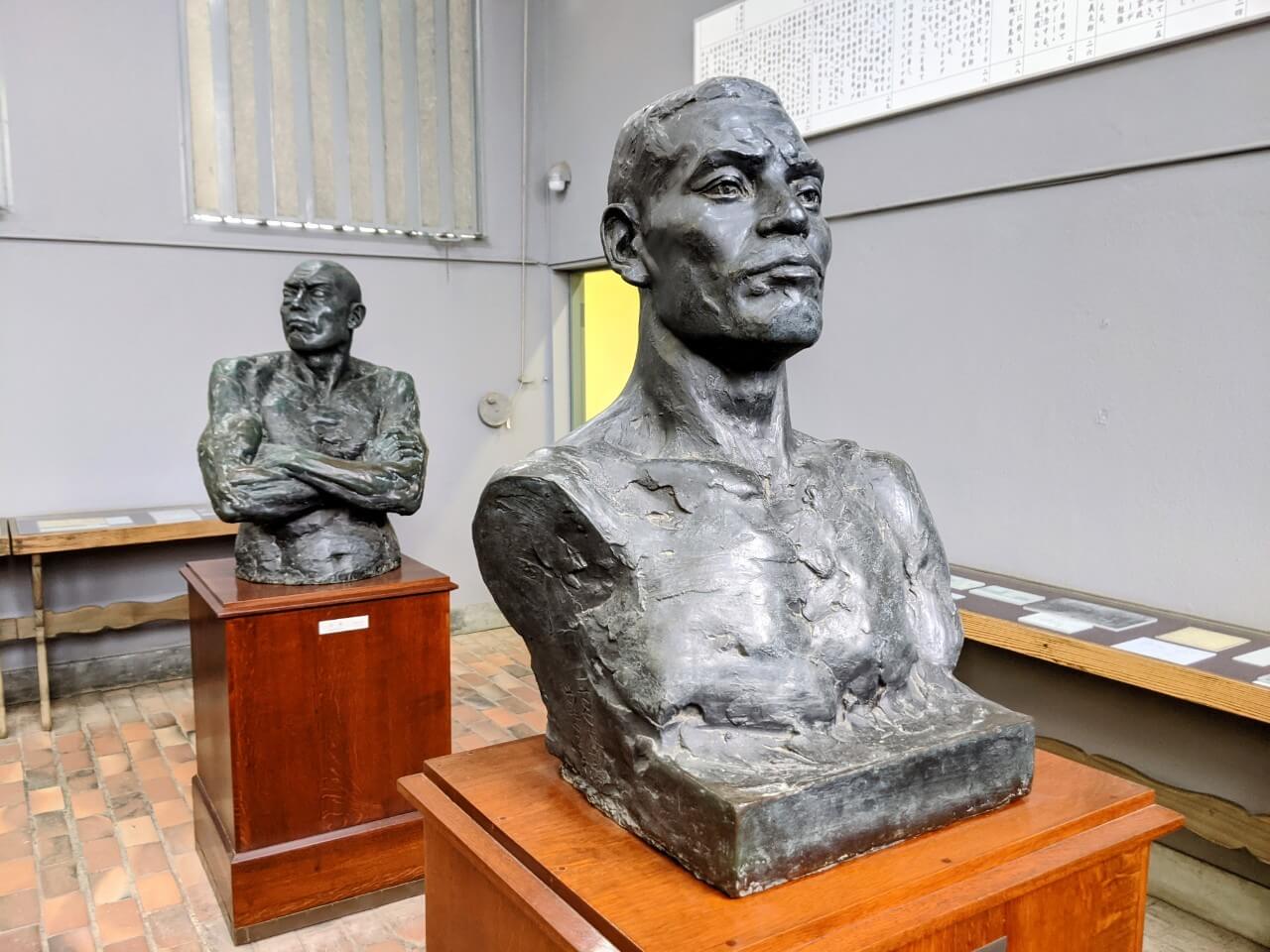
Born and raised in Azumino, Rokuzan studied art in Tokyo before movin to the United States at the beginning of the 20th century, and within a few years, onto to France where the discovered the work of Rodin. Deeply moved by his work, Rokuzan shifted his focus from painting to sculpture. Over the next 4 years, Rokuzan would move again between the United States, France and then a return journey to his homeland via Italy, Greece and Egypt.
In Tokyo, he would continue his work until is sudden and untimely death at the age of 30. As such, only 15 works survive to this day. Rokuzan’s strong Christian beliefs are reflected in the fact that the museum mimics a church, a tranquil setting in which to appreciate his life and work.
TOURS AND CHARTERS TO THE NORTHERN ALPS
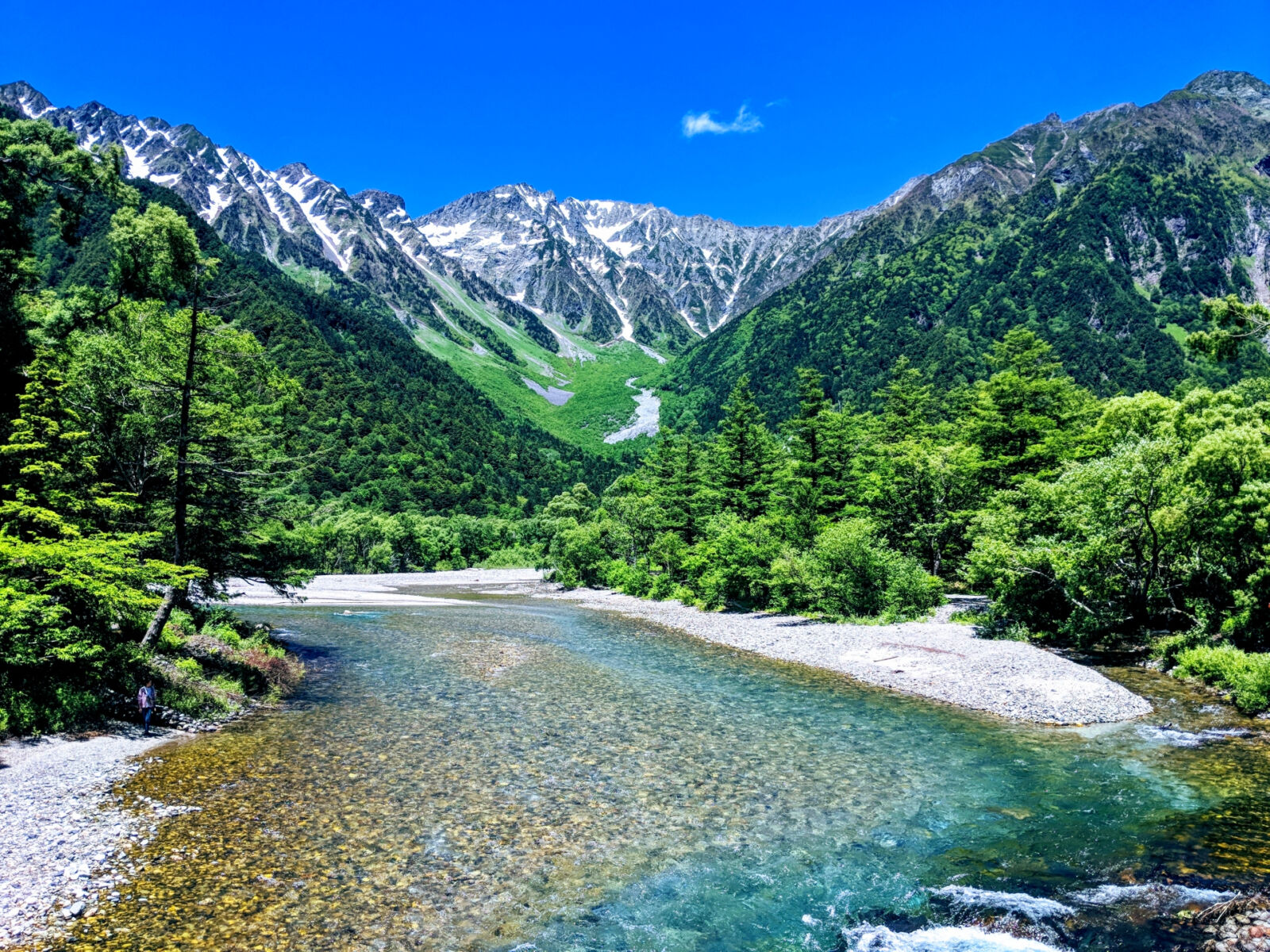
Operating through Spring, Summer, and Fall, we have a number of tours that bring you to the Northern Alps in all of their splendor. Taking away the hassle of transport, and offering multiple pick up points, each of our tours is designed to give you the best day possible without having to worry about anything besides enjoying the view.
Including a visit to Matsumoto Castle and a walk through the city, this tour goes on to spend the afternoon in Kamikochi, an alpine valley considered one of the most beautiful in Japan. With pick up available from both Nagano and Matsumoto, it is easy to join this tour and even easier to have fun - your guide will make sure of it! Make sure to bring good shoes, a camera, and a sense of love for the great outdoors.
Best Selling
[Spring Only] 1-Day Tour from Nagano: Snow Walls of Tateyama-Kurobe Alpine Route
- Spots:
- Pick-up:
- Drop-off:
[Summer/Autumn only] Tateyama-Kurobe Tour: Walking on the 'Roof of Japan'
- Spots:
- Pick-up:
- Drop-off:
Rivaling Kamikochi for its beauty, the Tateyama-Kurobe Alpine route involves a journey up into the mountains utilizing multiple forms of transport including buses, ropeways, and cable cars. In spring and early summer, the famous snow walls, towering far above the road, delight crowds and in summer and fall the natural scenery and changing leaves are sure to take your breath away. Make sure to book early in April and May as the tour is likely to book out in that season.

Last but certainly not least, our private charter service is ready to serve as your legs on your journey through Central Japan. We can pick you up from Tokyo and drop you off at your hotel in the region, take you to the trailhead and back when you are done, or add a guide and bring you around for a guided private tour. The itinerary is completely up to you, although we are always available to give suggestions if you desire! For more information on pricing and availability, please click HERE.














